Chris seems to have owned several not-Nationals resonator guitars: at least two metal-body Dobros and two wood-body Regals. Identifying the specific models and years of these guitars is difficult because, as the Folkway Music website complained in its review of Dobro resonators,
The model history of Dobro guitars in the 1930's is made entirely confounding by the use of serial numbers of various and occasionally overlapping sequences, model names that related to the retail price of the instruments rather than to the model's specifications, two manufacturing facilities located some 1700 miles apart, and the tendency of Regal (in Chicago) to randomly use what ever coverplates, tailpieces, and tuners were immediately available in the assembly of any given Dobro. After all, they were building mostly very inexpensive guitars at the height of the Great Depression - they weren't too concerned about what we would think some seventy years later!
Note that Dobro is capitalized as a proper noun indicating the guitar's manufacturer, not as a generic term for resonator guitars. Dobro is "short" for Dopyera Brothers. "Dobro" also means “good” in the brothers' native Slovak language. The brothers had worked for National String Instrument but quit to form their own company. The Dobro metal body differs from National resonator guitars of the same vintage (1930s) in that Dobro tops and backs were fastened to the sides with a unique rolled method that required no soldering. Because of this "lip," the guitar is sometimes referred to as a “Fiddle Edge.” Unfortunately, that rolled edge is about the only characteristic these vintage Dobros have in come. After many discussions with the ATCW group, we've determined that Chris played an OMI Model 33, a Dobro M-65 and a Dobro M-35 (all metal-bodies) and a Regal Model 37 and a Regal RD-40 (both wood-bodies addressed in Part III).
OMI Model 33
While busking the streets and parks of New York City in the late 1970s, Whitley played one of his first resonators, which Hiroshi Suda has identified as an OMI (Original Musical Instrument) Model 33, possibly a 33D.
Here’s a close-up photo of an OMI Model 33 to highlight its features.
According to Chris' brother Dan, Chris described this guitar as a "crappy brown dobro" that was stolen while Chris was busking. Sayonara, crappy OMI!
Dobro M-65
Jeffrey Duke Patterson commented that the Dobro shown in the early photo of Chris below (click on image to enlarge):
[It] appears to be ... possibly an M-65, as it looks like it has sandblasted etchings. These Dobros were known as 'fiddle-side' and sometimes 'scuba' Dobros. The top and back had a lip that rolled over to the side, giving it the look of a violin or 'fiddle.' The 'scuba' nickname refers to the bodies being made of steel or bell brass, but the way the sound holes looked with the steel crosses welded in them reminded players of a deep-sea diving scuba helmet.
Guitarhq.com mostly confirms Jeff's identification, noting that the M-65 had the following characteristics:
Nickel-plate brass metal body (like a National Style O) - Yes
'Singing ladies' scene sandblasted into the nickel finish - Maybe
Dot fingerboard inlays - Yes
Bound rosewood fingerboard - ?
Round window sound holes - Yes
DOBRO inlaid with celluloid into the rosewood peg head veneer - Yes
This model was first listed in the 1938 Dobro catalog and was discontinued in 1940.
Anders disputes this identification, stating that "[it] is not a Dobro brand guitar, it has a weird headstock [and] could be re-necked (Eric Clapton plays a vintage Dobro with a Martin neck). The cover plate is also wrong for a (vintage) Dobro." Further, Anders comments that "the peghead is really strange and does not look like a Dobro [although] the body does." Below I juxtapose Chris' peghead with that of an M-65 listed on reverb.com.
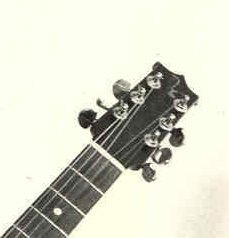
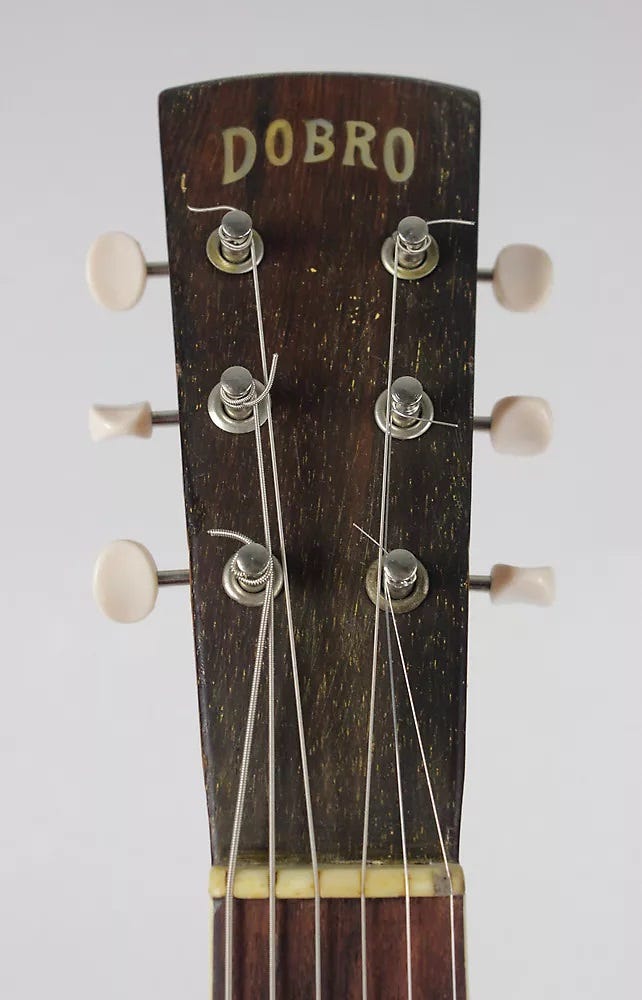
It seems that Chris ‘divested’ of his M-65 long before he was signed to Columbia; I could find no other photos of him with the M-35: just that poster for his appearance at Trude Heller’s in February 1979.
Dobro M-35
Another of Chris' metal-body Dobros might be the M-35 (possibly 1938/39 to 1941). Identifying this guitar has been a challenge because Dobro released a plethora of models during this time period.
The unusual feature here is the segmented f-holes. Guitarhq notes that, although many Dobros were made with the round/scuba sound holes, these segmented f-holes were used primarily on the M-35 and on Regal-made resonators. Finding the particular combination of these f-holes, the trapeze tail piece, and the concentric semi-circles of square cutouts on the coverplate proved challenging. The only "twin" I could find is a circa 1935 - 1940 Dobro M35 listed on Vintage Licks Guitars:
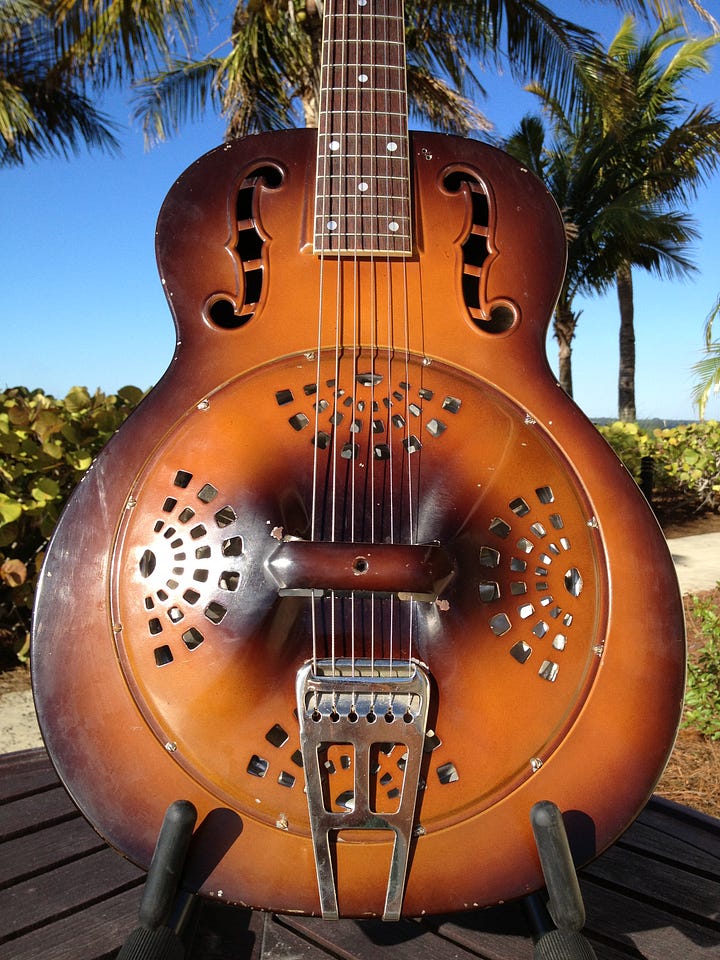
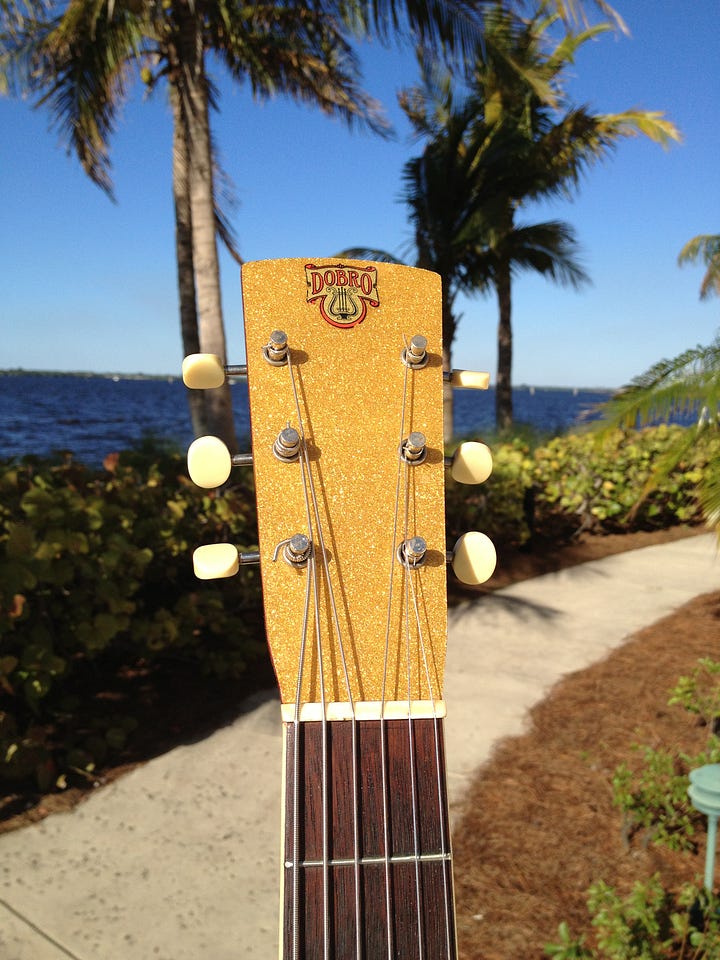
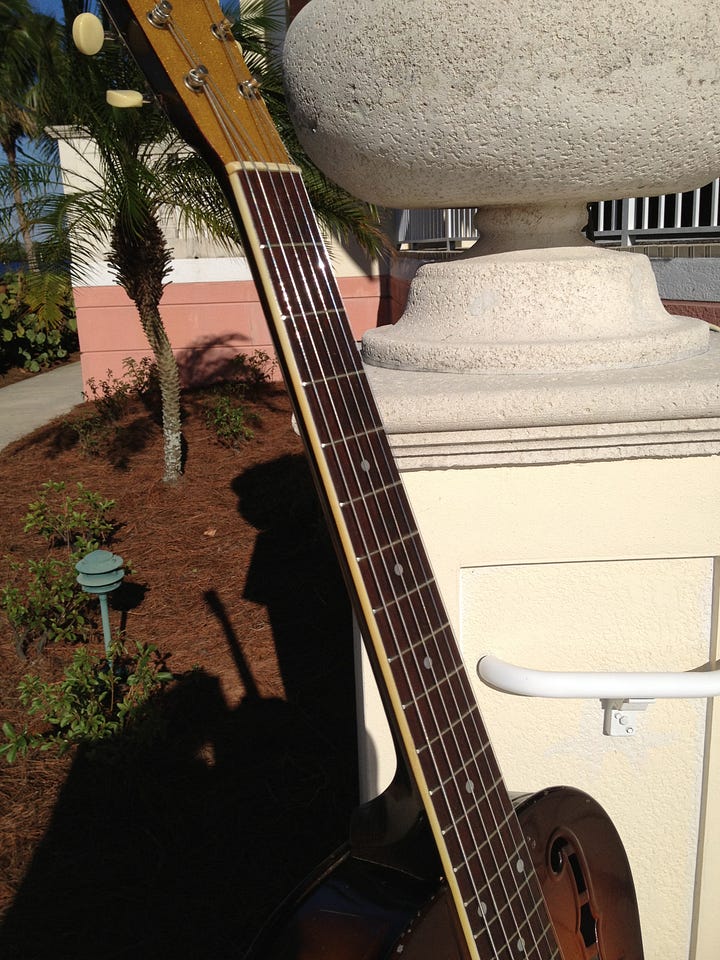

Notes re photos:
Top Left - Segmented f-holes are clearly visible, as are the concentric semi-circles of square cutouts on the coverplate and the trapeze tailpiece.
Top Right - Note the headstock; earlier models used a slotted headstock whereas 1935 -1940 models used a solid headstock.
Bottom Left - Note the absence of a plastic truss rod cover, indicating vintage.
Bottom Right - Note the configuration of white dots on the fretboard.
The guitar shown in the gallery above is a fraternal twin, not an identical twin, to Chris' guitar. As shown in the photo below, the coverplate of Chris' M-35 appears to be silver, not brown.
Although it seems that most Dobro M-35s were manufactured as full sunburst-body guitars, variations exist as shown in the following photo.

So it's possible that Whitley's M-35 was a two-tone. In any event, this Dobro features a spider cone, which Vintage Licks Guitars lauded: "These metal body spider cone resonator guitars differ from the metal body National Style O single-cone resonators in that (we believe) they project a crisper, more clear volume. The haunting sound of a spider cone is what both blues and country slide players seek.”
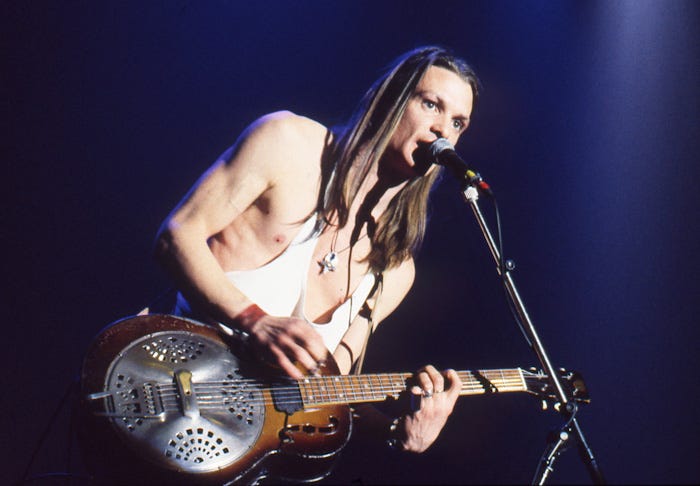

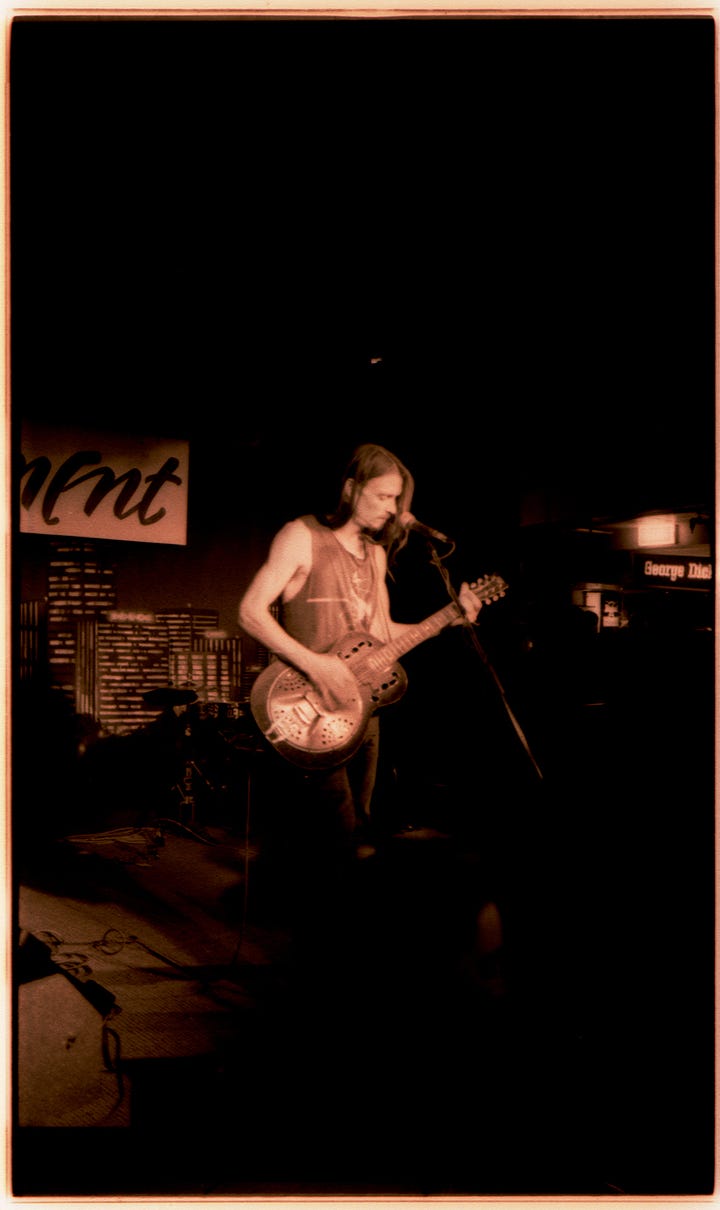
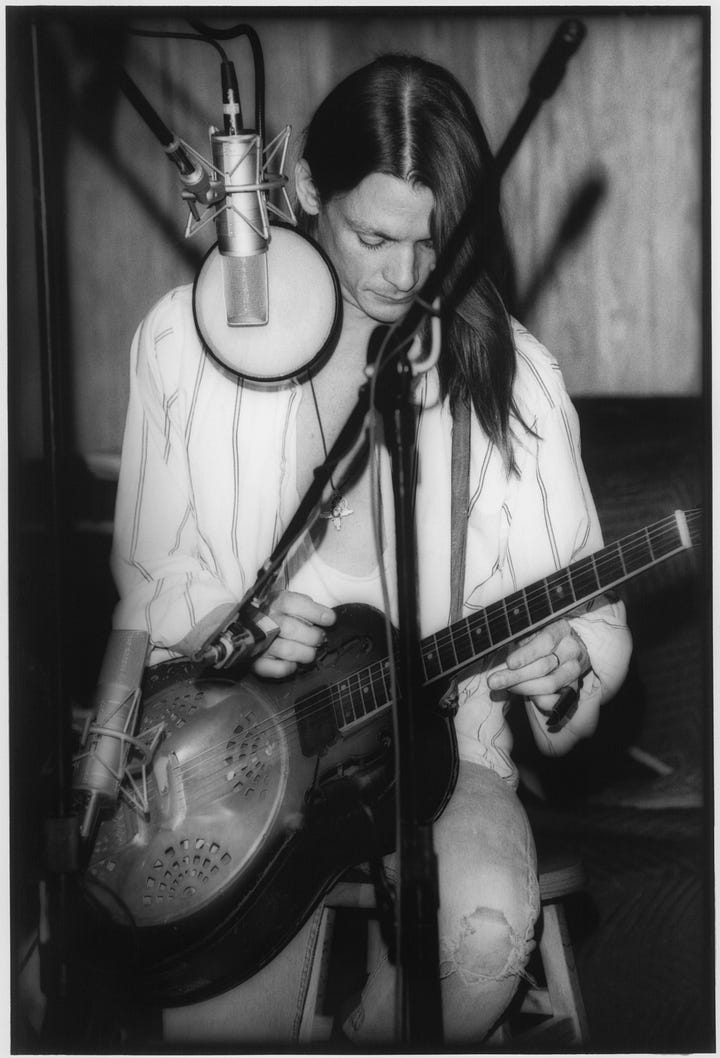
In the bottom-right photo, Chris is playing what we believe is our first capture of “New Machine” solo acoustic at the Columbia Records Radio Hour (1992-11-02). Here’s a video I created using Charles Miller’s photograph.
Almost two years later, sometime in 1994, Chris was captured rehearsing/recording “New Machine” as a track on his upcoming album Din of Ecstasy at Sony Music Studios in NYC. Again, Chris is playing his Dobro M-35. Thanks to Sarah Tuft for sharing this video on her Vimeo channel.
Although Whitley’s Dobro M-35 featured in these instances of “New Machine,” it seems that it disappeared from his arsenal shortly thereafter. In fact, one of his wood-bodied Regals seems to have taken its place. So, again, sayonara Dobro M-35. Those wood-bodied Regals are the focus of Part III.
Chris Whitley's Acoustic Guitars III
Part 1 documented Whitley’s National guitars; Part 2, his Dobros. Part 3 examines his Regal guitars. These are all resonators, but with significant differences. Whereas Whitley’s Nationals and Dobros were all metal-bodied resonators, his Regals were both wood-bodied resonators.






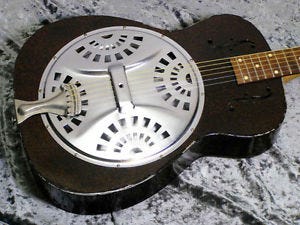



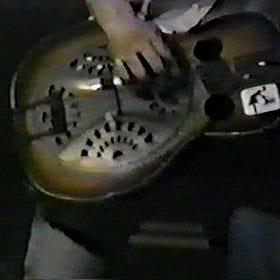
John Dopyera, the 1/3 of the Dopyera brothers, did not just work for the National String Instrument company. He invented the National resonator guitar, and founded the company (with his brothers and a bunch of investors).
The disagrement that made him and the brothers leave the company, also meant that he had to leave his patents behind and could not use those in the guitars he manufactured. So John Dopyera invented yet another type of resonator guitar, the Dobro. The cone in a dobro is very different from those you find in a National.